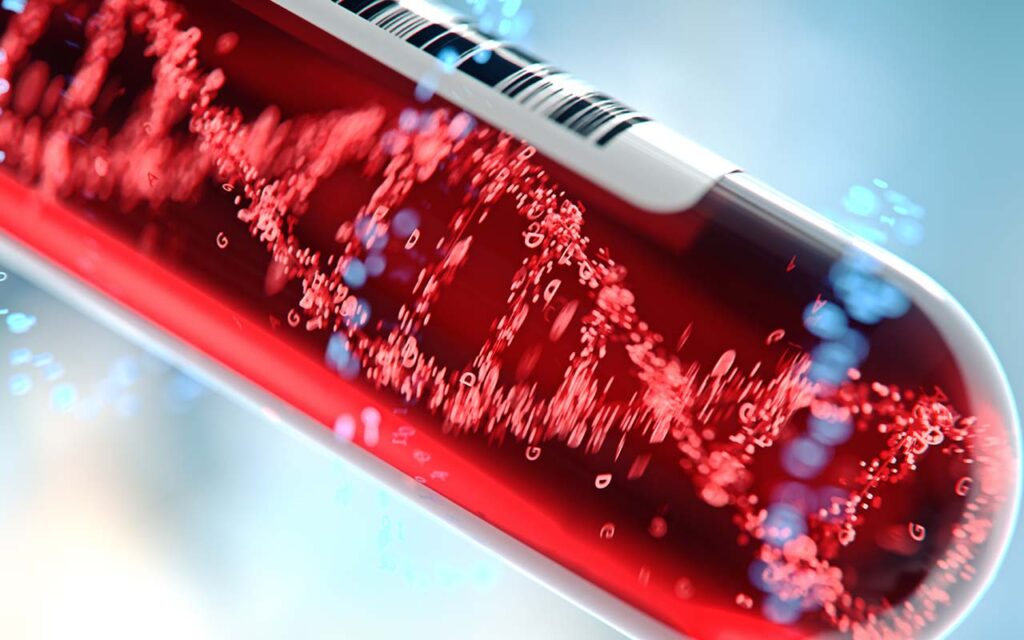Editor’s note: This blog was published by LinkedIn on Sept. 19, 2023.
A blood test can now search for 50 different cancers that may be imminently threatening patients, even if they don’t have symptoms. The test is called a multi-cancer detection liquid biopsy, a category that represents a massive breakthrough in a field where early detection is essential to saving lives. Properly deployed, these liquid biopsies would be a major contributor to the national goal of cutting cancer deaths in half.
But cancer detection blood tests aren’t built into annual physicals like standard blood tests, and so far they aren’t covered by insurance. As a cancer researcher and a health economist, we’ve seen up close through our lab and consulting work the revolution contained in a blood draw. We also know that the country has not awakened to the financial and medical implications of this new technology. As we all are learning in Ukraine, the best armaments are needed to defeat a strong aggressor. Patients, physicians and health plans will all be impacted by a clear game changer in the decades-long war on cancer.
Despite progress, current cancer screening tools are woefully inadequate. Effective screening exists for only seven cancers. Those tests are awash in false positives. Current detection methods for breast, cervical, colon and lung cancers find an estimated 190,000 cases in the U.S. each year, but also generate over 8 million false positives, a ratio of 43 worrying diagnoses for each true positive. The waste in chasing so many erroneous reports, and the emotional anguish, are enormous.
Adaptation can be difficult for any “outside-the-box” innovation, and the liquid biopsy for early cancer detection is certainly that. The scientific discovery of signs of cancer in the blood enables detection of cancers that have no screening procedures today, and radically departs from the imaging tools that make screening possible in a minority of cancers. Liquid biopsies use all our knowledge about the biology of cancer, employ the newest technologies in cellular imaging and genomics, and leverage advanced machine-learning data science. Yet in concept they are relatively simple. The tests exploit the fact that cancers shed cells and small quantities of DNA into the bloodstream. The cells and the DNA carry signatures that distinguish cancers from normal and one another, alerting where in the body a cancer is likely located. The detection capability of liquid biopsies varies with the cancer, and with the state of the cancer in the body: the faster the cancer develops and the more advanced the disease the more likely the test will find it.
One of the leading developers of multi-cancer liquid biopsies, GRAIL, ran a validation study of its Galleri test in 2021. The study included 2,283 people with known cancer and 1,254 healthy people. It came back with a false positive rate of less than 1 percent, meaning the test was extremely accurate in discerning when people didn’t have cancer-related DNA circulating in their bloodstreams.
However, it only identified about 50% of those patients who did have a cancer, and for some of the major cancers such as breast and prostate cancers the multi-cancer liquid biopsy detection rate is about 35%. While that result may seem discouraging, it can make a big difference when combined with traditional screenings and advanced single-cancer, early-detection liquid biopsies. Breast cancer detection, for example, has the potential to jump from 85% with mammograms alone to 98%when breast-specific liquid biopsies are involved, dramatically reducing the need for recalls and tissue biopsies.
So if a blood test can search for 50 or more cancers in one draw and reach unprecedented accuracy in combination with other screenings, why isn’t everyone getting tested annually?
The short-term answer is that the FDA appropriately requires more proof that the tests will help save lives. Insurance companies are hesitant to cover the tests until the FDA acts, and until they better understand the financial risks involved in dealing with the results of widespread testing. In the meantime, the FDA allows Galleri test samples to be examined in regulated labs. But to participate, patients have to find a doctor to write a prescription and then shoulder the test cost on their own (currently about $950).
Also, noise in the blood-based testing arena has introduced skepticism. Theranos, the notorious company that claimed to find diseases with a pin prick of blood, turned out to be a fraud. Unlike Theranos, multi-cancer detection tests are being rigorously evaluated in large clinical trials.
These issues will fade as the promise of early cancer detection with liquid biopsies becomes more evident. Long term, however, patients and physicians will have to wrestle with the challenges presented by tests that find cancers that previously were hidden until symptoms appeared. What actions should be taken? Knowing a cancer is present but not yet debilitating is nonetheless life changing, at the least triggering some level of lifelong surveillance. There are also financial consequences. Early detection of cancer will likely shift more costs from Medicare to employers and private insurance that cover younger people.
Early detection and interception of cancer will require early engagement. Liquid biopsies make that possible. They promise to significantly bolster the battle against a disease that continues to kill over 600,000 Americans annually. Scientific and financial reviews await, but the shift is coming from screening for only a few individual cancers to screening individuals for all cancers.
Dana Goldman is Dean of the USC Sol Price School of Public Policy and co-director of the Schaeffer Center for Health Policy & Economics at the USC Alfred E. Mann School of Pharmacy and Pharmaceutical Sciences. He is a scientific advisor to GRAIL. Peter Kuhn is the Dean’s Professor of Biological Sciences and director of CSI-Cancer: USC Michelson Center Convergent Science Institute in Cancer. He is developing a breast cancer specific single detection test.
Sign up for Schaeffer Center news
